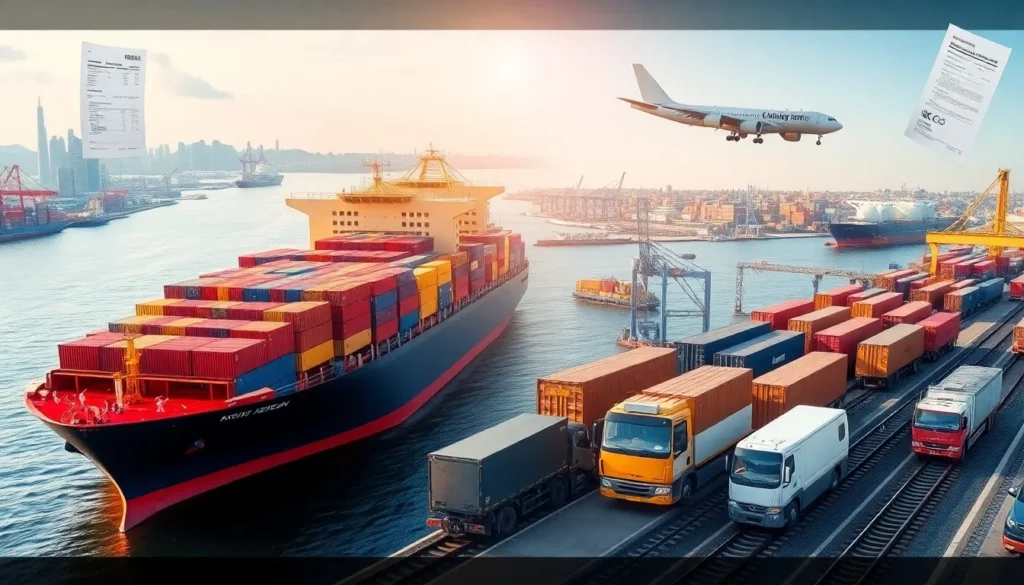Shipping from China to Norway can feel daunting, but with the right knowledge, you can streamline the process and save costs. This guide breaks down transportation options, customs procedures, and regulatory requirements to empower you with clear, actionable insights. You’ll learn how to choose the best shipping method, calculate duties and VAT, and partner with reliable freight forwarders to ensure smooth China-Norway trade.
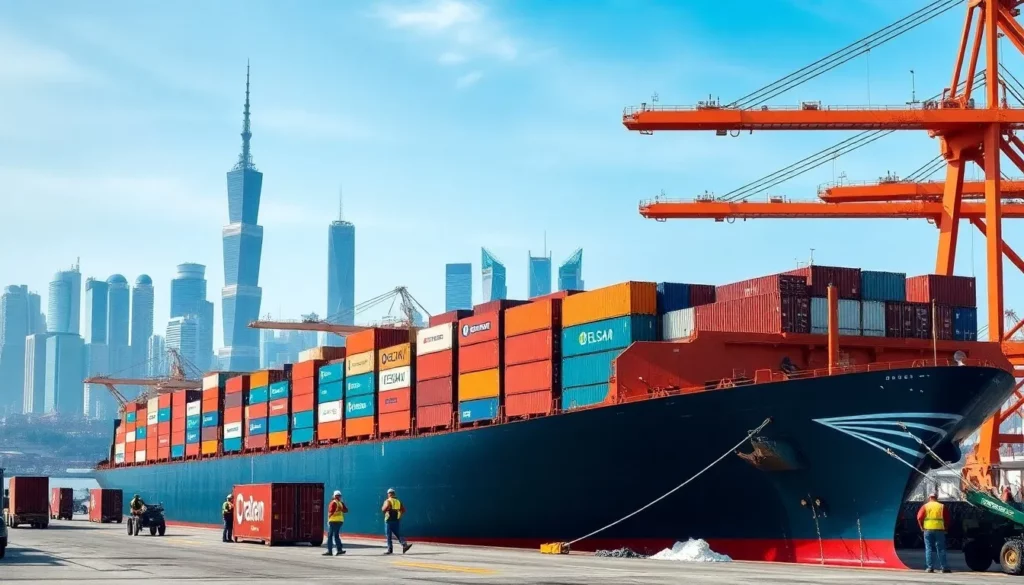
I. Comparing Shipping Methods from China to Norway
1. Sea Freight: Your Go-To for Cost-Effective Bulk Shipments
If you’re importing large volumes, sea freight is likely your best bet due to its affordability and capacity. Whether you’re shipping electronics or heavy machinery, this method suits businesses with regular import schedules. I’ve seen retailers thrive by leveraging sea freight’s economies of scale for seasonal stock.
Modern container ships connect Chinese and Norwegian ports with reliable schedules, even amidst global supply chain hiccups. You can trust major carriers to keep your goods moving efficiently.
A. Full Container Load (FCL): Ideal for High-Volume Importers
With FCL, you get exclusive use of a 20-foot or 40-foot container, giving you control over your shipment’s timeline and minimizing handling risks. Your goods stay sealed from origin to destination, reducing damage or loss.
- Transit Time: 25–40 days, depending on the route.
- Key Players: Carriers like Maersk offer competitive rates for volume importers.
- Best For: Businesses with enough cargo to fill a container.
Tip: Book early during peak seasons to secure space and avoid delays.
B. Less than Container Load (LCL): Perfect for Smaller Shipments
If your cargo doesn’t fill a container, LCL lets you share space with other importers, cutting costs. It’s ideal for SMEs testing new products or importing smaller batches.
- Transit Time: 30–45 days due to consolidation processes.
- Cost Savings: Rates range from $80–$95 per cubic meter.
- Best For: Startups or businesses with flexible delivery timelines.
Warning: LCL involves more handling, so ensure your goods are well-packed to avoid damage.
C. Major Ports in China and Norway
You’ll ship from key Chinese ports like Shanghai, Shenzhen, Ningbo, or Qingdao. Shanghai handles the most volume, while Shenzhen excels for electronics. In Norway, Oslo is the primary import hub, with Bergen and Stavanger offering modern facilities for efficient customs processing.
| Country | Key Ports | Specialty |
|---|---|---|
| China | Shanghai, Shenzhen, Ningbo | High volume, electronics, general |
| Norway | Oslo, Bergen, Stavanger | Main hub, regional distribution |
D. When to Choose Sea Freight
Opt for sea freight if cost trumps speed. It’s perfect for raw materials, seasonal goods, or large equipment where you can plan ahead for longer transit times.
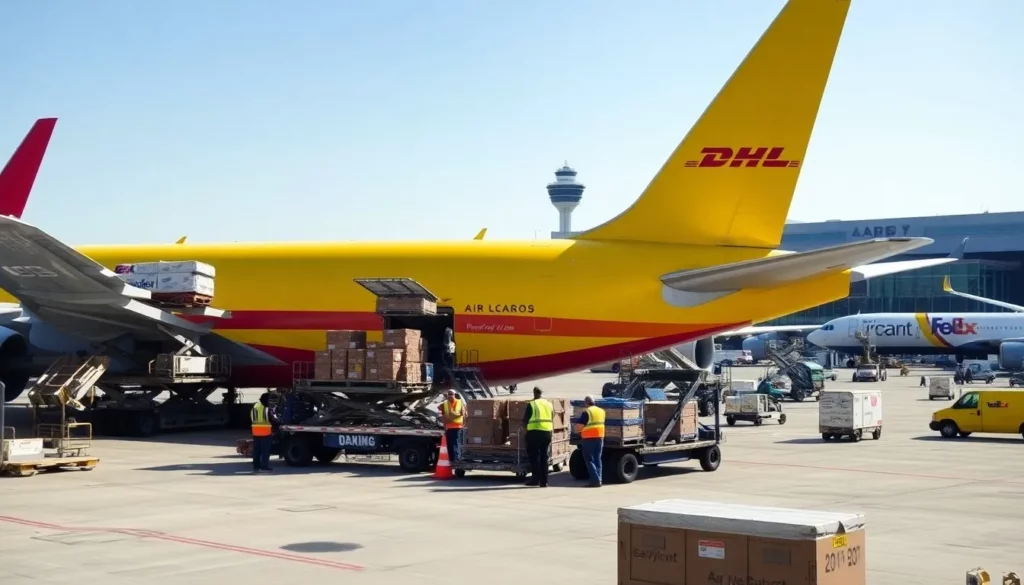
2. Air Freight: Speed for High-Value or Urgent Goods
Need your goods fast? Air freight delivers in 5–10 days, making it essential for perishable items, urgent orders, or high-value electronics. For example, a Norwegian retailer I worked with used air freight to rush a new smartphone model to market, beating competitors.
A. Traditional Air Cargo vs. Express Air Freight
Traditional air cargo, with costs of $4–$8 per kilogram, uses scheduled flights and is cheaper than express options. Express services (DHL, FedEx, UPS) offer door-to-door delivery in 3–7 days but at a premium.
| Type | Transit Time | Cost/kg | Best For |
|---|---|---|---|
| Traditional Air | 5–10 days | $4–$8 | Cost-conscious urgent shipments |
| Express Air | 3–7 days | Higher | Door-to-door, high-priority goods |
B. Key Airports for Cargo
China’s Shanghai Pudong (PVG) is the top air cargo hub, with Beijing and Guangzhou as strong alternatives. In Norway, Oslo Airport (OSL) handles most imports, while Bergen serves regional needs.
C. When to Choose Air Freight
Air freight shines for time-sensitive shipments where delays could mean lost sales or production halts. It’s worth the cost for high-value goods where shipping is a small fraction of the product’s value.
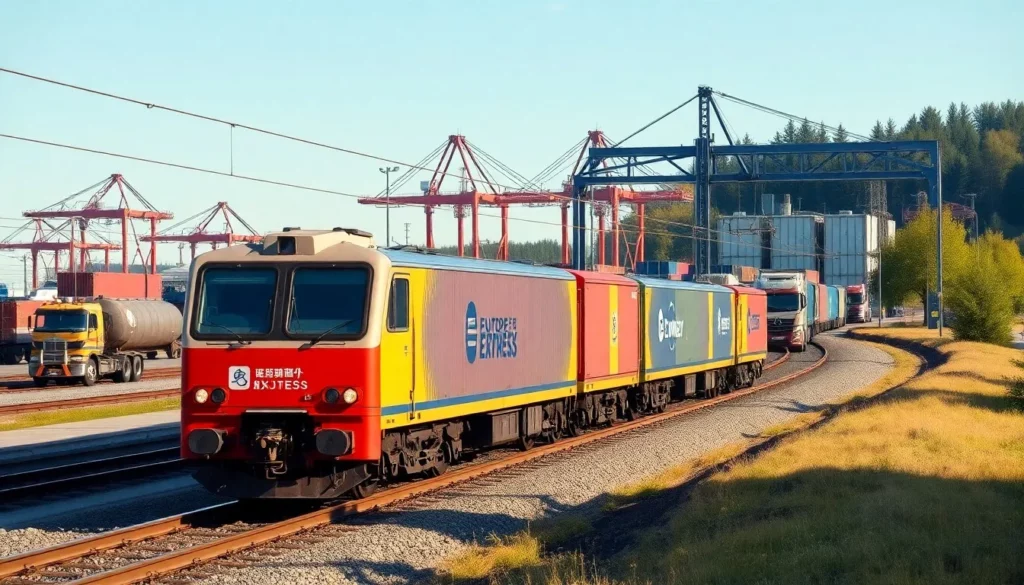
3. Rail Freight: A Smart Middle Ground
Rail freight balances speed and cost, with transit times of 15–25 days. It’s gaining traction for importers seeking faster delivery than sea freight without air freight’s price tag.
A. The China-Europe Railway Express to Norway
The China-Europe Railway Express links Chinese cities to Europe, with goods reaching Norway via hubs in Germany or the Netherlands. Routes like Wuhan-Sweden (launched in 2024) show growing Nordic connectivity.
- Key Routes: Zhengzhou to Hamburg (15–17 days), Chongqing to Duisburg (16–17 days).
- Final Leg: Goods transfer to Norway by truck or short sea routes.
B. When to Choose Rail Freight
Rail is great for electronics, automotive parts, or equipment needing moderate speed and high security. Plus, it’s more eco-friendly than air freight.

4. Express Courier Services: Fast Small Shipments
For small parcels, samples, or documents, express couriers like DHL, FedEx, or UPS deliver in 3–7 days with full tracking. They’re ideal for e-commerce or urgent spare parts.
A. Comparing Major Couriers
- DHL: Strong in both China and Norway, reliable door-to-door.
- FedEx: Excellent tracking, handles specialized cargo.
- UPS: Cost-effective for regular shipments.
- EMS: Budget-friendly for less urgent parcels.
B. When to Choose Express Shipping
Use express services for e-commerce orders, product samples, or urgent parts. Real-time tracking ensures a great customer experience.
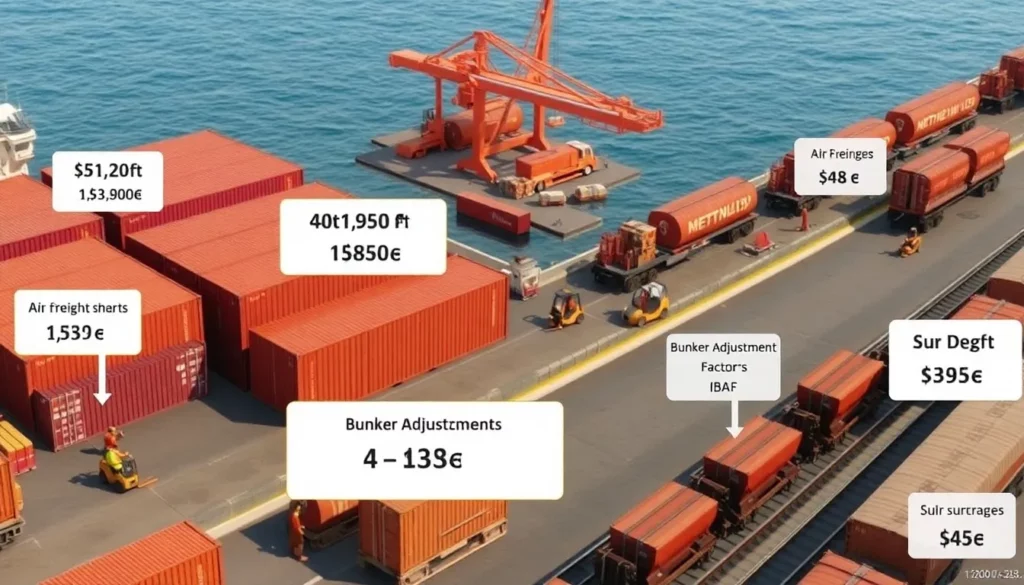
II. Calculating Total Shipping Costs
1. Core Shipping Costs Breakdown
Shipping costs go beyond freight rates. You need to factor in surcharges, port fees, and more to avoid surprises.
A. Freight Rate Calculations
- Sea Freight (FCL): $1,200 for 20ft, $1,850 for 40ft containers.
- Sea Freight (LCL): $80–$95 per cubic meter.
- Air Freight: $4–$8 per kg, based on weight or volume.
- Rail Freight: Priced between sea and air, varies by distance and weight.
B. Surcharges to Watch
- Bunker Adjustment Factor (BAF): Adjusts for fuel price changes.
- Currency Adjustment Factor (CAF): Covers exchange rate shifts.
- Peak Season Surcharge (PSS): Applies during high-demand periods like Chinese New Year.
C. Terminal Handling Charges (THC)
Expect $50–$100 per container at Chinese and Norwegian ports for cargo processing.
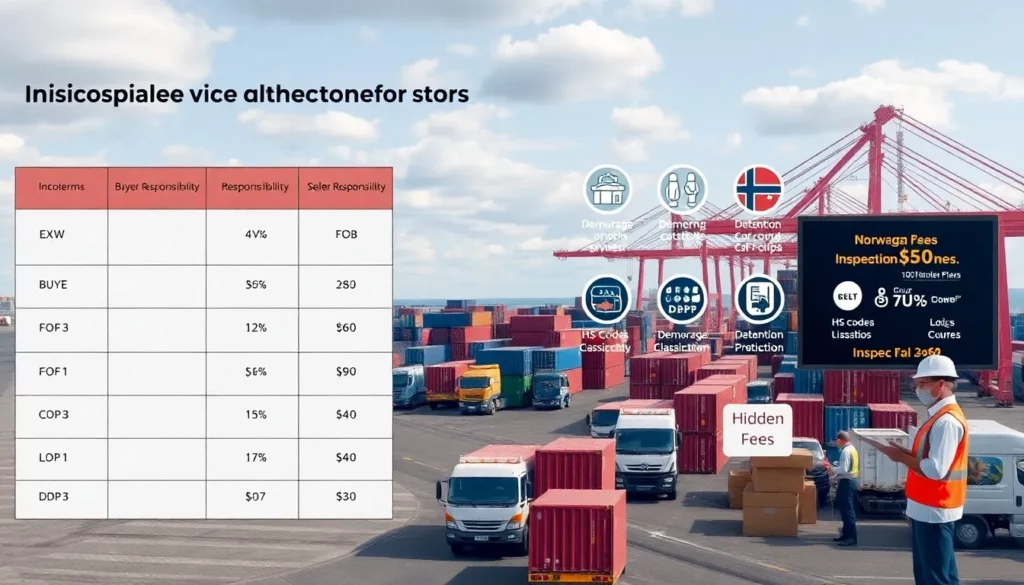
2. How Incoterms Impact Costs
Incoterms define who pays what, affecting your bottom line. Here’s a quick guide:
| Incoterm | Buyer Responsibility | Seller Responsibility |
|---|---|---|
| EXW | All logistics from supplier’s facility | Minimal, only goods preparation |
| FOB | International shipping, import procedures | Export clearance, port delivery |
| CIF | Import procedures, final delivery | Shipping, insurance to destination port |
| DDP | Minimal, only receiving goods | All logistics, including customs |
Tip: Clarify Incoterms upfront to avoid unexpected costs.
3. Norwegian Customs Duties and Taxes
Norway’s import duties depend on product type and origin. Most Chinese goods face standard rates unless trade agreements apply.
A. VAT Calculation
- Standard Rate: 25% on most goods.
- Reduced Rates: 15% for food, 12% for specific services.
- Formula: (Product value + shipping + insurance + duties) × VAT rate.
The VOEC scheme lets foreign sellers collect VAT for goods under NOK 3,000, simplifying customs for small shipments.
B. HS Codes and Duty Rates
Use Harmonized System (HS) codes to classify products and determine duties. Accurate coding prevents delays or penalties.
4. Avoiding Hidden Fees
Hidden costs can derail your budget. Watch for:
- Demurrage: Fees for containers left at ports beyond 5–7 days.
- Detention: Charges for delayed container returns.
- Customs Inspection Fees: $50–$300 for brokerage or exams.
Best Practice: Review contracts carefully and clarify free time allowances.
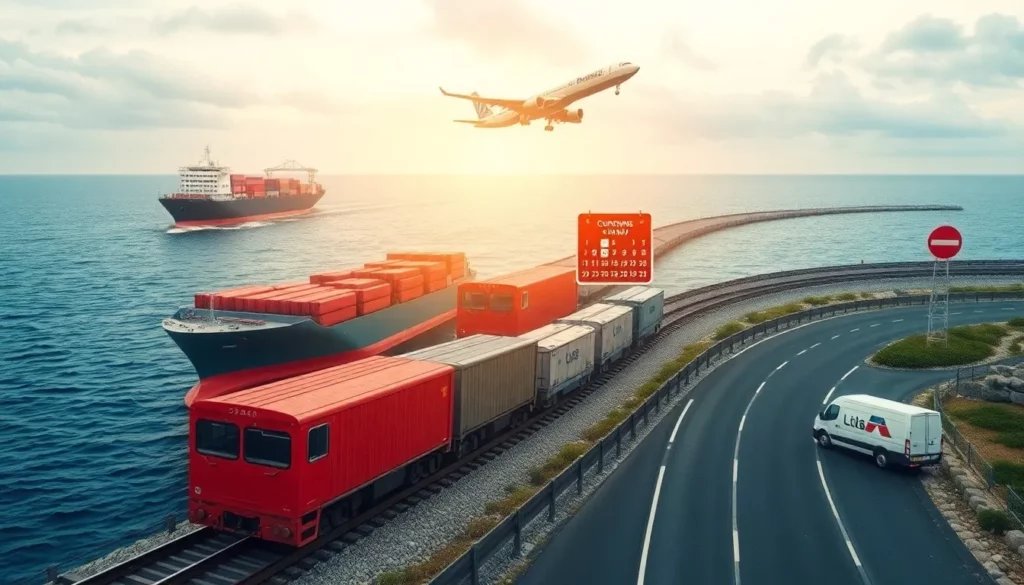
III. Estimating Transit Times
1. Transit Times by Method
| Method | Time | Notes |
|---|---|---|
| Sea Freight | 30–45 days | FCL faster than LCL |
| Air Freight | 5–10 days | Direct flights save time |
| Rail Freight | 18–25 days | Includes final delivery to Norway |
| Express Courier | 3–7 days | Door-to-door, premium service |
2. Factors Affecting Transit Times
- Port-to-Port vs. Door-to-Door: Door-to-door adds inland transport time.
- Customs Delays: 1–3 days normally, up to 10 if issues arise.
- Seasonal Congestion: Chinese New Year can delay shipments by weeks.
- Geopolitical/Weather Issues: Red Sea disruptions add 10–15 days.
Tip: Plan for buffer time during peak seasons or unstable periods.
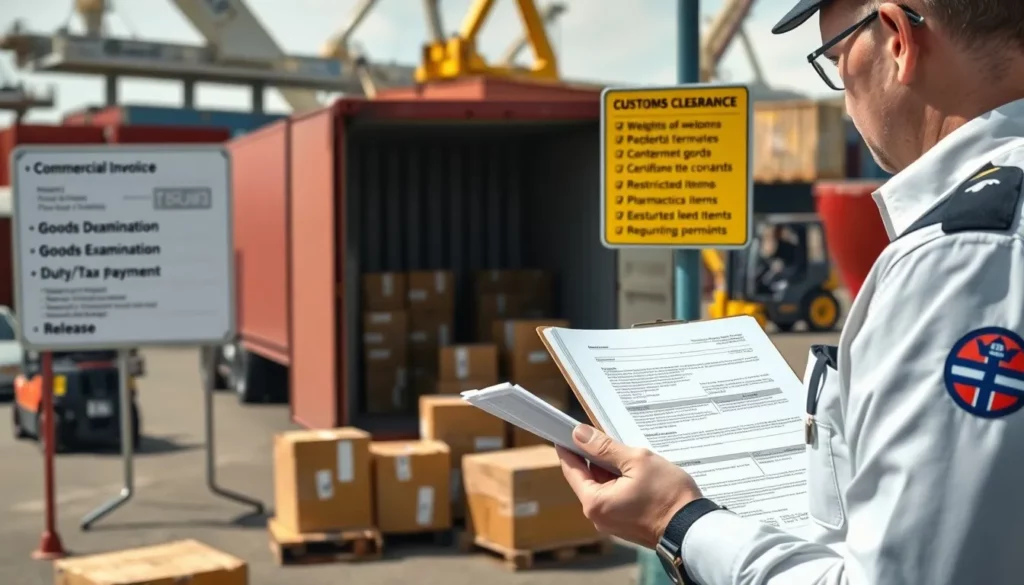
IV. Navigating Norwegian Customs
1. Essential Documents
Ensure these documents are accurate to avoid delays:
- Commercial Invoice: Details buyer, seller, and product info.
- Packing List: Lists weights, dimensions, and packaging.
- Bill of Lading/Air Waybill: Tracks shipment custody.
- Certificate of Origin: May reduce duties under trade agreements.
2. Customs Clearance Steps
- Pre-Arrival Declaration: Submit details before goods arrive.
- Goods Examination: Random checks verify contents.
- Duty/Tax Payment: Pay based on HS codes and value.
- Release: Goods cleared for delivery.
3. Prohibited and Restricted Items
- Prohibited: Weapons, counterfeit goods, endangered species.
- Restricted: Pharmaceuticals, food, electronics need permits.
Warning: Check regulations early to avoid seizures or fines.

V. Choosing a Reliable Freight Forwarder
1. Key Evaluation Criteria
Pick a forwarder with:
- China-Norway Expertise: Knowledge of trade lane specifics.
- Comprehensive Services: Door-to-door, customs, warehousing.
- Certifications: NVOCC, IATA, or customs brokerage licenses.
- Strong Network: Local presence in China and Norway.
2. Vetting Process
- Request Quotes: Provide detailed cargo and route info.
- Check Reviews: Look for case studies or testimonials.
- Assess Communication: Prioritize responsive, clear support.
3. Tailored Solutions
- Large Retailers: Need consolidated shipments, custom reports.
- E-commerce: Require fast, trackable services.
- SMEs: Benefit from LCL and simplified processes.
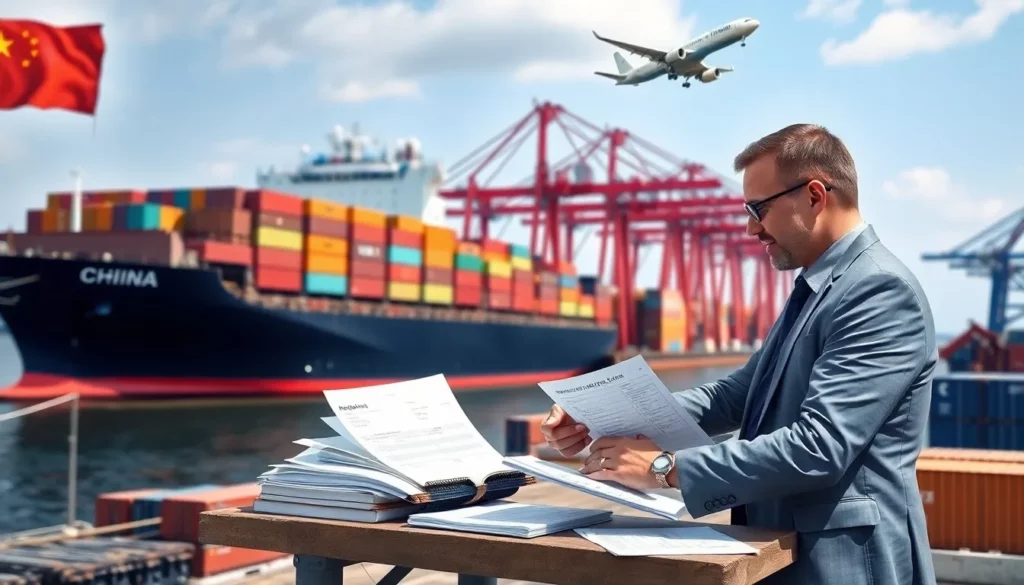
Conclusion:
Balance cost, speed, and volume to pick the right shipping method. Partner with a seasoned freight forwarder to navigate regulations and optimize routes. Before shipping, verify documents, confirm Incoterms, and calculate total costs.
Final Checklist:
- Complete all required documents.
- Understand Incoterms responsibilities.
- Estimate duties, VAT, and hidden fees.
- Choose a method matching your needs.
- Communicate clearly with your forwarder.
For expert guidance, consult a logistics professional to tailor your China-Norway shipping strategy.
FAQs
1. What’s the cheapest shipping method for small businesses?
LCL sea freight ($80–$95 per cubic meter) is most cost-effective for non-urgent shipments, taking 30–45 days.
2. How are duties and VAT calculated in Norway?
VAT (25% standard, 15% food) applies to product value, shipping, insurance, and duties. Duties vary by HS code.
3. What’s the difference between DDP and FOB?
FOB shifts responsibility to you at the Chinese port; DDP covers all logistics, including Norwegian customs.
4. How can I track my shipment?
Use bill of lading (sea), air waybill (air), or online tracking (express) provided by your carrier.
5. What documents ensure smooth customs clearance?
You need a commercial invoice, packing list, bill of lading/air waybill, and certificate of origin if applicable.

